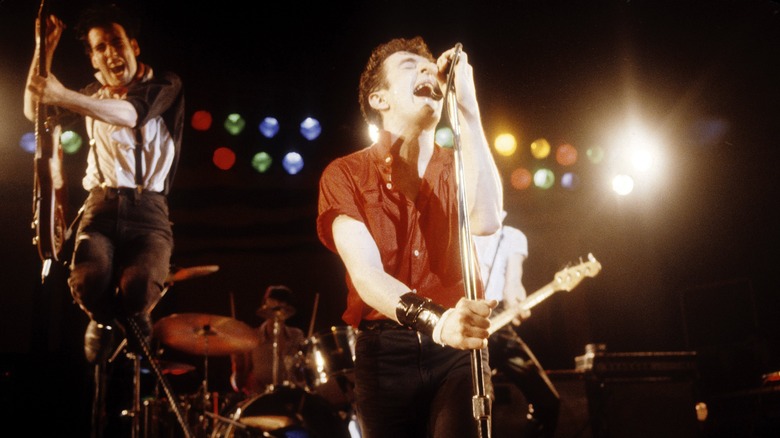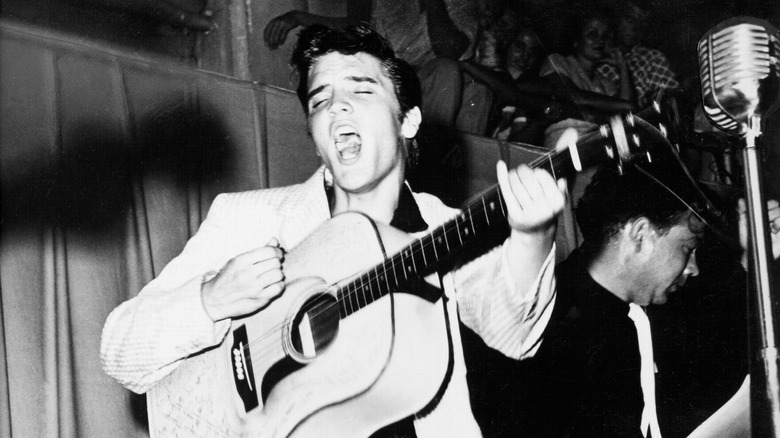The Clash's London Calling Had An Interesting Connection With Elvis Presley's Debut Album
In the UK and elsewhere, punk rock music is seen as a clean break from the rock 'n' roll traditions that came before it, as Pitchfork notes. One band in the vanguard of the '70s-era punk rock movement in England was The Clash, led by singer Joe Strummer. Today, the band's classic 1979 full-length release "London Calling" is considered among the greatest — if not the best — rock records of all time (via Rolling Stone).
As revealed in the songs on "London Calling," the band's influences at that point extended beyond just punk rock to the likes of reggae, ska, and jazz. There's even a cover version of the song "Brand New Cadillac" by the English rockabilly artist Vince Taylor (via AllMusic). It was from that same rockabilly tradition that the now iconic cover was also drawn. The overall design on the cover, in fact, harkens back to the earliest days of rock 'n' roll, proving that while The Clash changed rock music forever, their influences were far more traditional than some expect.
The cover features a blurry photo of Clash bassist Paul Simonon
Blurry and black and white, the featured image on the "London Calling" cover is one of Clash bassist Paul Simonon doing something thoroughly punk rock with his instrument: smashing it. The incident happened at the New York Palladium in 1979 before "London Calling" was released, and the photo was taken by the photographer Pennie Smith, according to Rolling Stone. In an interview with Fender, Simonon recalled what happened on the night that photo was taken.
At the gig, security forced audience members to remain seated, a policy that frustrated Simonon enough for him to break his guitar. "I destroyed this bass guitar," the musician admitted. "Unfortunately you always sort of tend to destroy things that you love ... I wasn't taking it out on the bass guitar because there's something wrong with it because it's (actually) a great guitar." he also said. Once it was time to put the "London Calling" cover together, the band turned to punk-influenced visual artist Ray Lowry. The photo seemed like the perfect fit (via The Guardian).
The album reflects Elvis Presley's debut record
In addition to "London's Calling" release, 1979 also marked the 23rd anniversary of Elvis Presley's self-titled debut, a 12-track, less-than-30-minute statement of purpose that put Elvis on the map for generations, according to the Graceland website. That Presley cover features the King of Rock 'n' Roll himself in black and white, delivering the type of exuberant performances he was known for; his name is rendered in pale pink and green on the left and bottom of the frame. Based on that description alone, it's plain to see how reminiscent the cover of "London Calling" is to that classic rockabilly record.
As the BBC goes on to explain, the photographer Pennie Smith tried to dissuade the band from using her image; it was too blurry and poorly framed in her opinion. Nonetheless, the image and cover design have ranked on many best albums and best rock photography lists from outlets like Billboard and Q Magazine. It was also turned into a British Royal Mail stamp in 2010. Bits of Simonon's smashed bass were on display at the Cleveland Rock & Roll Hall of Fame and were relocated to the Museum of London for their "The Clash: London Calling" exhibit.


